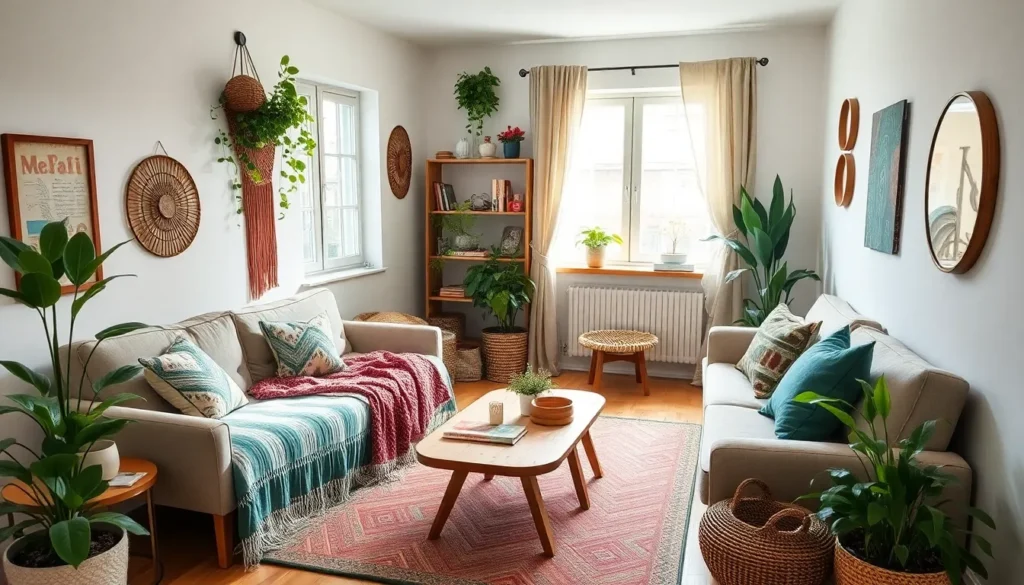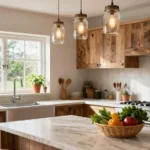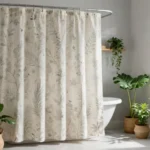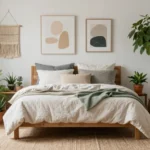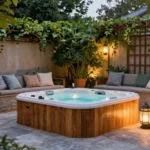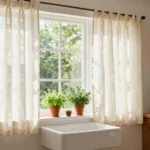Living in a small space can sometimes feel like a juggling act, especially when it comes to decorating your living room. You want it to be stylish and functional, but with limited square footage, the challenge can feel overwhelming. That’s why I put together this post to help you tackle that design dilemma head-on. If you’re someone who loves creating cozy, inviting spaces but feels restricted by size, then this guide is just what you need.
This collection of 25+ space-saving ideas is perfect for anyone looking to transform their small living room into a stylish haven. Whether you’re renting an apartment or have a modestly-sized home, you deserve a space that reflects your personality and lifestyle. You’ll find a variety of tips tailored to fit the bohemian-inspired aesthetic, bringing warmth and character to your surroundings.
What can you expect from this guide? You’ll discover practical and creative ways to use space-saving furniture, stylish home accents, and effective organization tips. From multi-functional pieces to clever decor choices, these ideas will help you maximize your space while keeping your living area beautiful and inviting. Get ready to turn your small living room into a true reflection of your unique style!
Let’s dive in and explore how you can decorate your small living room with flair and function!
Key Takeaways
– Floating shelves are an excellent way to display decor while keeping the floor clear.
– Multi-functional furniture, like ottomans with storage, can save space and add versatility.
– Layered textiles not only add comfort but also bring a cozy, bohemian vibe to your space.
– Utilizing vertical space with tall bookcases can create depth and provide more storage options.
– Personal artwork displays can add character and make your small living area feel uniquely yours.
1. Floating Shelves for Display and Storage
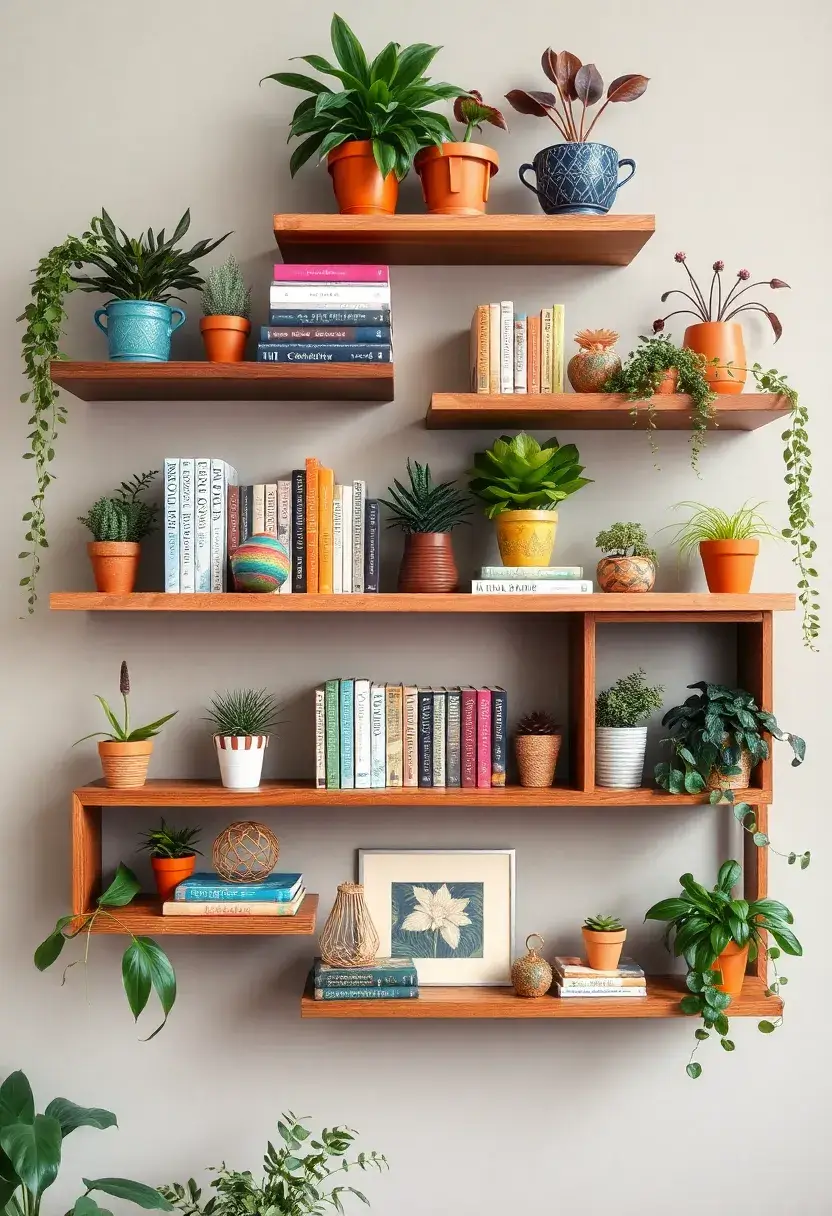
Floating shelves can transform your small living room into a stylish and organized space. These shelves draw the eye upward, making your room feel larger while showcasing your favorite books, plants, or decor. You can find them in various materials, like wood or metal, and colors that match your bohemian style. Pinterest loves the trend of asymmetrical arrangements, which adds a playful touch to your display.
To implement this idea, select a mix of sizes and shapes for your shelves to create visual interest. Look for affordable options at thrift stores or online marketplaces for budget-friendly finds. Group items by color or theme to keep things organized and visually appealing. This not only saves floor space but makes your living area feel personal and inviting.
• Use small potted plants for a touch of greenery.
• Combine with storage baskets underneath for functionality.
• Arrange items by color or theme for a cohesive look.
• Hang at different heights for an asymmetrical design.
With floating shelves, you can personalize your space while maintaining a clean, open feel.
Floating Shelves for Display and Storage
Editor’s Choice

BAYKA Floating Shelves for Wall, Wall Mounted Rustic Wood Shelves for Ba…
 Amazon$20.99
Amazon$20.99
Decorative Storage Boxes with Lids – Set of 2 Beautiful Fluted Cardboard…
 Amazon$26.99
Amazon$26.99
Der Rose 2 Pack Small Fake Plants Mini Artificial Potted Plants for Tabl…
 Amazon$6.99
Amazon$6.992. Multi-Functional Furniture

In small living rooms, multi-functional furniture is a lifesaver. Look for items that serve two purposes, like ottomans that provide storage or coffee tables that can transform into dining surfaces. This approach allows you to maximize your space without sacrificing style. Seek out pieces with interesting textures or designs to enhance your bohemian vibe.
To make the most of this idea, consider investing in a sofa bed for when guests visit, allowing them to stay comfortably without needing a spare room. Choose side tables with built-in drawers to keep items hidden while maintaining a clean look. This way, your living area can adapt to any situation, making it perfect for entertaining or relaxing.
• Invest in a sofa bed for guest accommodation.
• Choose side tables with hidden storage.
• Look for a bench with cushions for dual use.
• Consider ottomans that can double as seating.
With the right multi-functional pieces, you can create a living room that feels stylish and practical.
Multi-Functional Furniture
Editor’s Choice

Sleeper Sofa Bed,55” Convertible Pull Out Couch With Side Pockets,Velve…
 Amazon$231.99
Amazon$231.99
HOOBRO End Table with Charging Station, Narrow Side Table, Nightstand wi…
 Amazon$37.98
Amazon$37.98
SONGMICS MAZIE Collection – 43 Inches Folding Storage Ottoman Bench, Ott…
 Amazon$49.99
Amazon$49.993. Cozy Nooks with Floor Cushions
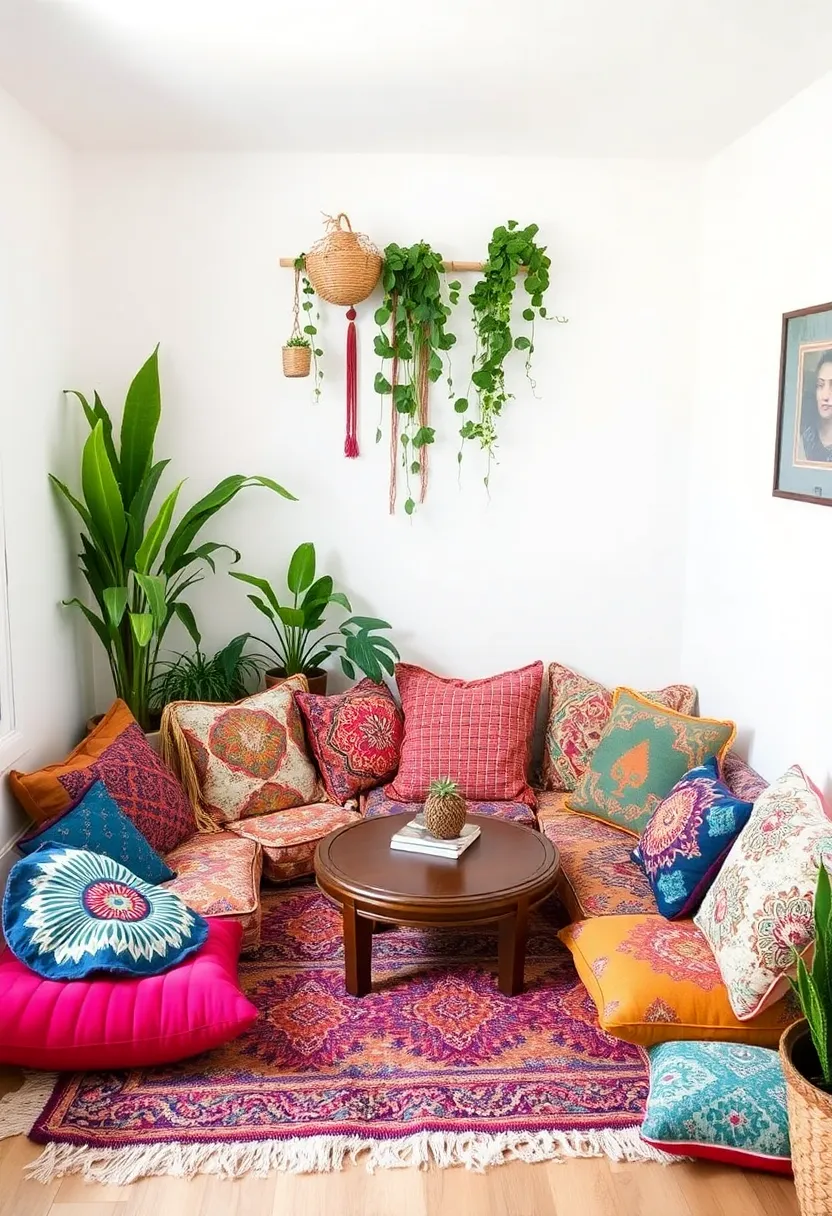
Floor cushions can create a warm, inviting atmosphere in your small living room. They’re perfect for tight spaces where traditional seating can feel cramped. Mix sizes and patterns to create a cozy nook that invites relaxation. Layering textiles, like throws and blankets, helps bring that bohemian charm to life.
To implement this idea, choose vibrant colors and patterns to enhance the overall aesthetic. Add a low table for snacks or drinks, creating a perfect spot for casual gatherings. You can also incorporate a small bookshelf nearby to encourage reading and relaxation.
• Use vibrant prints for a lively look.
• Place a low table in the center for convenience.
• Create a reading nook with a bookshelf nearby.
• Layer different textiles for added comfort.
This cozy arrangement invites you to unwind and enjoy your space.
Cozy Nooks with Floor Cushions
Editor’s Choice

Washable Floor Pillow Cushion for Adults, Meditation Cushion Pillow, Lar…
 Amazon$41.59
Amazon$41.59
Furinno CLASSIC Coffee Table, Modern Rectangle Coffee Table with 1.8 Inc…
 Amazon$39.99
Amazon$39.99
Furinno LUDER Book Shelf, 3-Cube Bookshelf, Bookcase, 9.3″ x 12″ x 31.5″…
 Amazon$26.44
Amazon$26.444. Wall-Mounted Desks
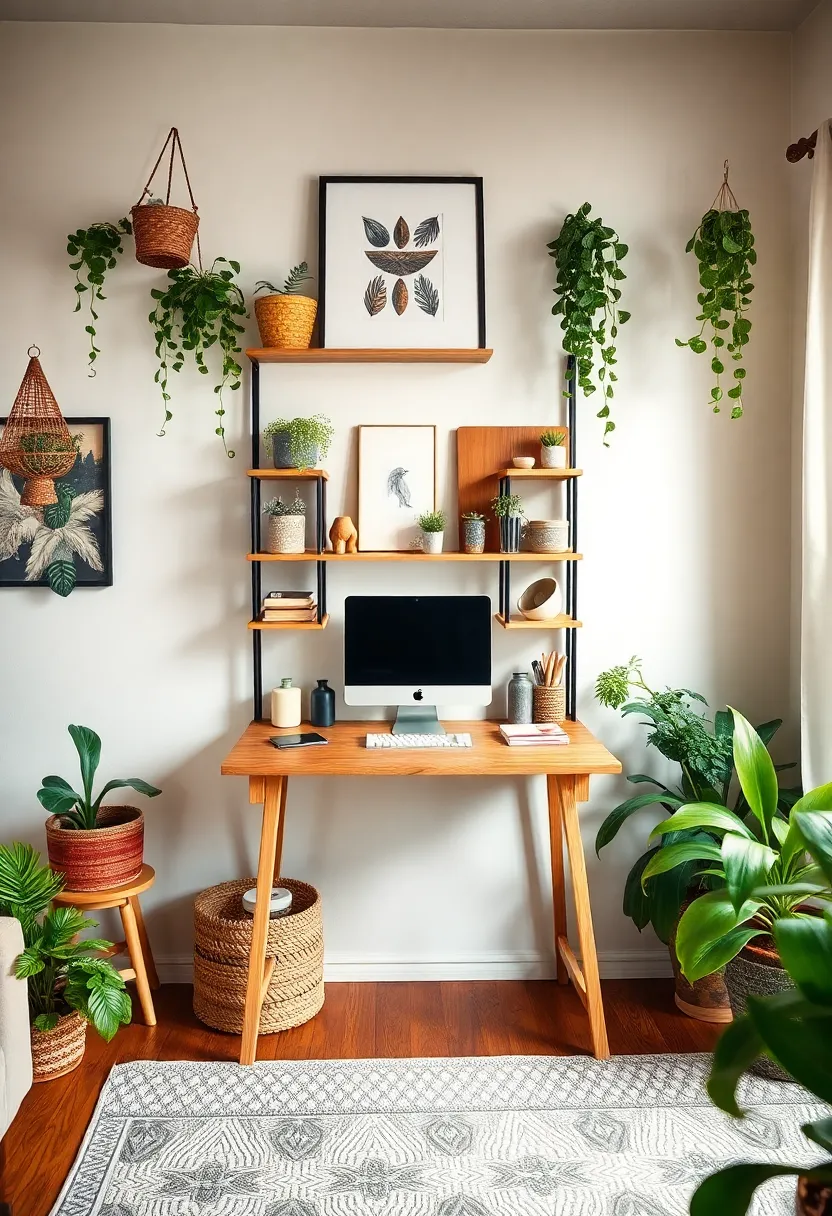
Wall-mounted desks are a clever solution for adding workspace in a small living room. They save valuable floor space and can be folded away when not in use, keeping your room tidy. Look for designs that fit your bohemian aesthetic, like rustic or stylish options.
To make this work, choose a wall with a nice view or good lighting for your desk. Consider adding wall-mounted organizers for office supplies to keep everything neat. Personalize the workspace with photos or art that inspire you, making it a place you love to be.
• Position the desk in a well-lit area for comfort.
• Use wall organizers for efficient storage.
• Decorate with personal touches that inspire.
• Select a design that matches your style.
With a wall-mounted desk, you can create a functional workspace without overwhelming your living area.
Fun fact: A wall-mounted desk can reclaim up to 5 square feet of precious floor space in a small living room, freeing room for boho textiles and plants. It’s one of the ideas to decorate small living room—fold it away when not in use, effortless, stylish, and perfectly practical.
Wall-Mounted Desks
Editor’s Choice
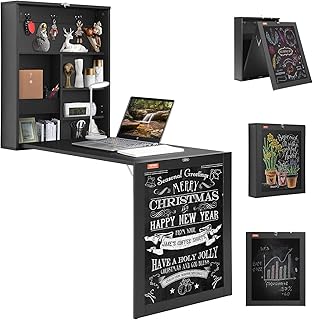
VEVOR Wall Mounted Desk, Fold Out Convertible Desk, Multi-Function Foldi…
 Amazon$72.98
Amazon$72.98
Fixwal Hanging Floating Shelves, 4 Sets of Wall Mounted Shelves for Wall…
 Amazon$22.99
Amazon$22.99
BAYKA Floating Shelves for Wall, Wall Mounted Rustic Wood Shelves for Ba…
 Amazon$20.99
Amazon$20.995. Use Mirrors to Create Depth
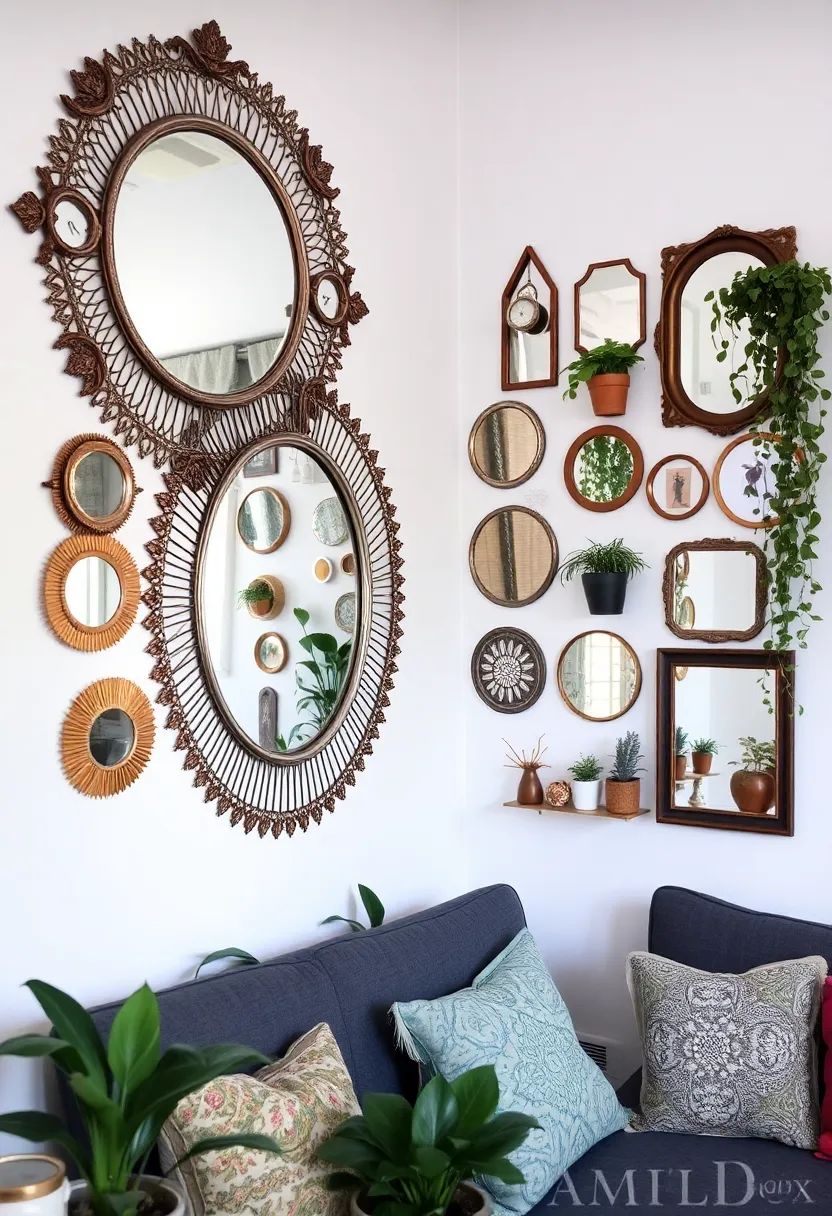
Mirrors are a classic trick for making small spaces feel larger. By incorporating a large mirror or several smaller ones, you can add a striking element to your bohemian living room. They reflect light and create an illusion of depth, enhancing the overall atmosphere.
To maximize this effect, hang mirrors in creative shapes that complement your decor. Position them opposite windows to bounce light around, brightening your space. Choose decorative frames that align with your bohemian theme for an added touch of character.
• Hang mirrors in unique shapes for style.
• Position them to reflect natural light.
• Use frames that match your bohemian decor.
• Create a focal point with a large mirror.
Mirrors not only enhance your space visually but also add an artistic flair.
Use Mirrors to Create Depth
Editor’s Choice

Delma Full Length Mirror, 28″x 55″ Window Pane Decorative Mirror for Wal…
 Amazon$109.99
Amazon$109.99
3 Pack Wall Mirrors Decorative with Hanging Chain, Modern Mirror Decor f…
 Amazon$15.99
Amazon$15.99
Boho Wall Mirror with Wood Frame, 36″x24″ Faux Rattan Decorative Vanity …
 Amazon$66.49
Amazon$66.496. The Power of Rugs

Rugs can define areas within your small living room, making it feel inviting and cohesive. A large area rug anchors your seating area while adding warmth and texture. Opt for vibrant patterns that embody boho chic to elevate your space.
To create a dynamic look, consider layering rugs. Try placing a larger neutral rug beneath a smaller patterned one for added interest. Ensure that your rug is under at least the front legs of your furniture to create a cohesive space. Natural fiber rugs bring an earthy feel and enhance comfort.
• Layer rugs for a dynamic look.
• Ensure the rug is under furniture legs for cohesion.
• Use natural fibers for a cozy feel.
• Choose vibrant patterns that express your style.
With the right rug, your small living room will feel like a stylish sanctuary.
The Power of Rugs
Editor’s Choice

SAFAVIEH Area Rug 9×12 – Natural Fiber Collection – Large – Natural Brow…
 Amazon$358.47
Amazon$358.47
Home Dynamix HD5382 Tribeca Collection 3-Piece Area Rug Set, Brown/Red
 Amazon$68.76
Amazon$68.76
Washable Area Rug 8×10, Large Soft Rugs for Living Room Vintage Beige Ca…
 Amazon$89.98
Amazon$89.987. Hanging Plants for Vertical Appeal
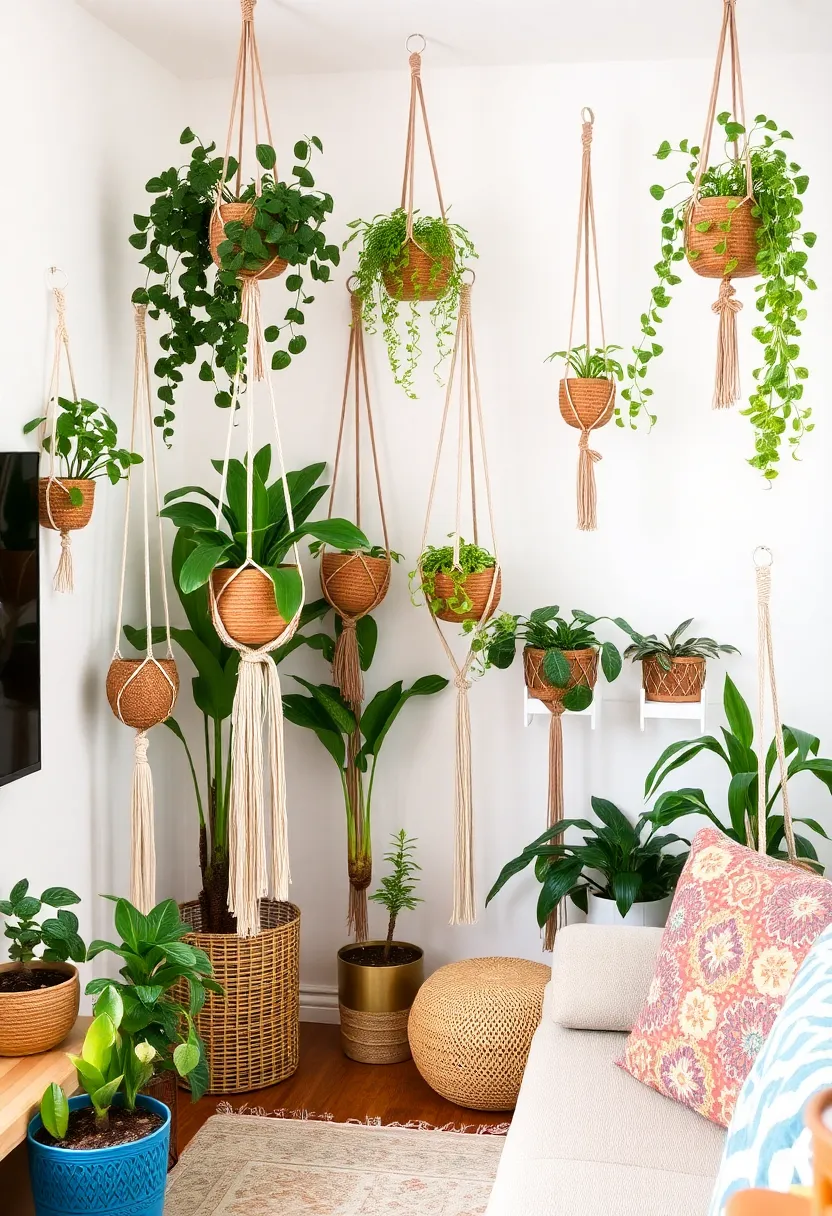
Hanging plants bring nature indoors while saving valuable surface space in your small living room. They add a vertical dimension that enhances your bohemian aesthetic. You can create a lush, inviting environment with the right arrangements.
Use macramé hangers for a chic touch that complements your style. Hang plants at different heights for a beautiful cascade of greenery. Trailing plants like pothos or string of hearts can create dramatic effects and enrich your space.
• Use macramé hangers for a stylish look.
• Hang plants at varying heights for interest.
• Choose trailing plants for a dramatic effect.
• Mix different plant types for diversity.
These hanging beauties not only purify the air but also serve as eye-catching decor pieces.
Hanging Plants for Vertical Appeal
Editor’s Choice

MIPON 3 Pack Macrame Plant Hanger Indoor Hanging Planter for Plants Hold…
 Amazon$9.99
Amazon$9.99
Costa Farms Golden Pothos Live Plant, Easy Care Indoor House Plant in Gr…
 Amazon$12.92
Amazon$12.92
Rotating Window Wall Plant Shelves Stand Holder, 3 Tiered Metal Floating…
 Amazon$24.99
Amazon$24.998. Compact Seating Solutions

When space is limited, compact seating is essential. Search for chairs that can be easily moved or stacked when not in use. Many designs save space while also adding unique style to your room.
Consider poufs or bean bags that can be tucked away when not needed. A slim loveseat can complement your decor without overwhelming the room. Stools can double as side tables or extra seating, enhancing versatility.
• Look for stackable chairs for flexibility.
• Choose poufs or bean bags for casual seating.
• Use a slim loveseat to save space.
• Opt for stools that serve dual purposes.
With compact seating options, your living room can adapt to any occasion!
Compact Seating Solutions
Editor’s Choice

Flash Furniture 4 Pack Hercules Series Trapezoidal Back Stacking Banquet…
 Amazon$168.40
Amazon$168.40
HIGOGOGO Round Stuffed Pouf Ottoman, Corduroy Poufs with Foam Chunk Fill…
 Amazon$39.99
Amazon$39.99
Yaheetech 46″ Small Modern Fabric Sofa Loveseat Mid Century 2 Seater Sof…
 Amazon$142.49
Amazon$142.499. Vintage Accents for Character

Incorporating vintage accents can add charm and character to your small living room. Antique pieces or retro accessories bring uniqueness and a story to your space. Mixing these elements with modern decor can create an eclectic vibe that showcases your personality.
Look for thrifted items that fit seamlessly into your bohemian theme. Vintage trays can help organize small items in a stylish manner, adding to the aesthetic. Balance your decor by ensuring vintage pieces complement rather than overwhelm the room.
• Search for thrifted items that resonate with your style.
• Mix vintage with modern pieces for contrast.
• Use vintage trays for organizing decor.
• Ensure vintage accents enhance your overall design.
Embracing vintage accents can bring warmth and charm to your living area.
Vintage Accents for Character
Editor’s Choice

Warmtree Vintage Jewelry Organizer, Decorative Tray for Jewelry, Towel, …
 Amazon$9.39
Amazon$9.39
PHOPAGO Boho Plant Wall Art Green Botanical Bohemain Framed Wall Printin…
 Amazon$29.73
Amazon$29.73
HIG Set of 2 Decorative Round Pleated Throw Pillows, Classy Accent Pumpk…
 Amazon$32.99
Amazon$32.9910. Creative Use of Lights
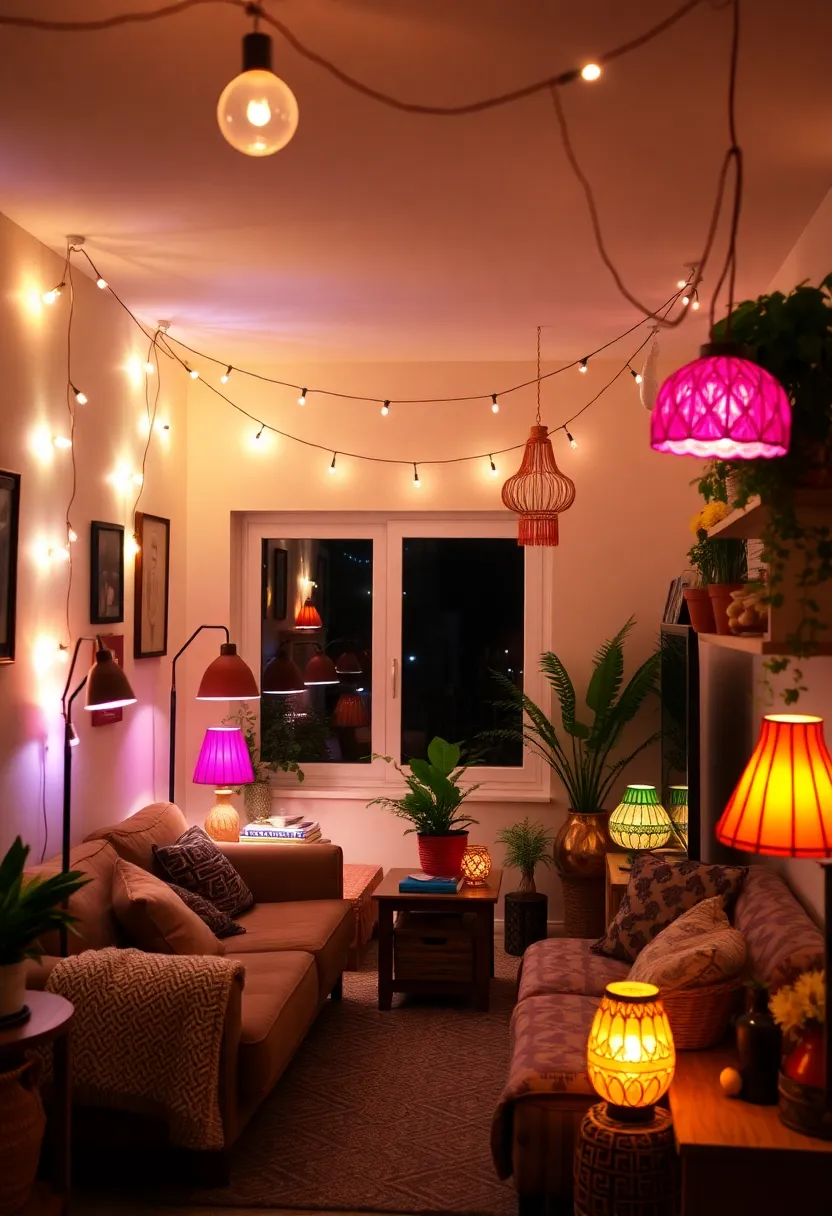
Lighting can dramatically change the feel of your small living space. Using creative lighting solutions not only enhances the ambiance but also helps the room feel larger. Consider string lights, colorful lamps, or artistic fixtures that align with your bohemian style.
Layering light sources, such as floor lamps, table lamps, and overhead lights, adds depth to the space. Colored bulbs or filters can bring a whimsical touch to your decor. Position lights to highlight artwork or decor pieces you want to showcase, adding character to your living area.
• Layer different light sources for depth.
• Use colored bulbs for a fun twist.
• Position lights to highlight decor pieces.
• Choose fixtures that resonate with your style.
With the right lighting, your small living room will glow with personality and warmth.
Creative Use of Lights
Editor’s Choice

Brightever LED Outdoor String Lights 100FT Patio Lights with 52 Shatterp…
 Amazon$35.98
Amazon$35.98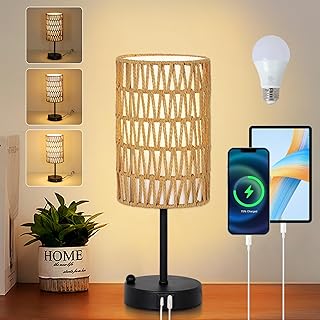
Touch Table Lamp For Bedroom with Bulb, Boho Small Desk Lamp For Living …
 Amazon$26.98
Amazon$26.98
Modern Floor Lamp Simple Design with White Shade, Foot Pedal Switch, 60″…
 Amazon$19.99
Amazon$19.9911. Personal Artwork Display

Showcase your personality through a dedicated art display. A gallery wall in your small living room can create a stunning focal point. Frame a mix of your artwork, photographs, and cherished pieces to reflect your style.
Choose frames of varying sizes and styles for an eclectic feel. Arrange them thoughtfully, leaving some space between each piece for a balanced look. Incorporate three-dimensional decor for added interest and depth.
• Mix frame sizes for an artistic effect.
• Keep spacing consistent for a balanced look.
• Add three-dimensional pieces for depth.
• Showcase items that represent you.
This personal touch beautifies your space while telling your unique story.
Fun fact: A gallery wall in a small living room can visually expand the space by up to 20%. Mix 5–7 frames of varying sizes as part of your ideas to decorate small living room, a focal point that’s eclectic, bohemian, and something you’ll actually enjoy every day.
Personal Artwork Display
Editor’s Choice

eletecpro 12×12 Picture Frames Set of 9 with Mat for 8×8 Photos or witho…
 Amazon$33.08
Amazon$33.08
MHARTK66 3 Piece Framed Canvas Art Prints Wall Art for Living Room Moder…
 Amazon$58.80
Amazon$58.80
QEEIG Bathroom Floating Shelves for Wall – 15.7″ Wall Mounted Shelf Over…
 Amazon$16.92
Amazon$16.9212. Layered Textiles for Comfort

Layering textiles can create a cozy vibe in your small living room. Combine throws, pillows, and blankets to add comfort and personality. Stick with bohemian patterns and textures to beautifully harmonize your space.
Mixing different fabrics like cotton, wool, and silk adds depth and interest. Oversized floor cushions provide extra seating and enhance comfort. Don’t shy away from combining patterns; find a balance that feels right for you.
• Use different fabrics for depth.
• Incorporate oversized cushions for comfort.
• Mix and match patterns that resonate with you.
• Layer throws for added warmth.
With layered textiles, your living room becomes a cozy sanctuary for relaxation and socializing.
Layered Textiles for Comfort
Editor’s Choice

Large Floor Cushion Seating Round Floor Pillows Cushions for Adults Over…
 Amazon$44.99
Amazon$44.99
Bohemian Throw Blanket for Couch,Colorful Chenille Tassels Boho Woven Hi…
 Amazon$33.01
Amazon$33.01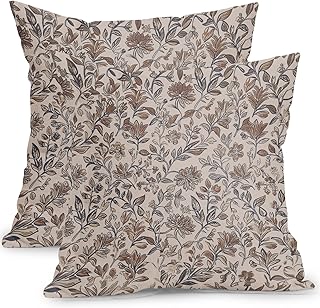
Vintage Floral Pillow Covers 18×18 Inch Set of 2 Antique Flower Block Pr…
 Amazon$7.76
Amazon$7.7613. Smart Storage Solutions

In small living rooms, smart storage solutions are essential for maintaining organization. Find creative ways to integrate storage into your decor without compromising on style.
Decorative baskets or stylish boxes can store items while enhancing your aesthetic. Consider shelving units that display decor while hiding clutter for a neat look. Storage ottomans can double as seating and decor, providing extra functionality.
• Use decorative baskets for hidden storage.
• Opt for shelving units that combine display and storage.
• Choose ottomans that serve dual purposes.
• Keep items organized to make your space feel larger.
A little organization can go a long way in making your living area feel welcoming.
Smart Storage Solutions
Editor’s Choice

Storage Basket for Organizing, Woven Baskets for Storage, Rectangle Deco…
 Amazon$25.64
Amazon$25.64
Lifetime Home 43″ Folding Storage Ottoman Bench for Living Room, Bedroom…
 Amazon$37.75
Amazon$37.75
BAYKA Floating Shelves for Wall, Wall Mounted Rustic Wood Shelves for Ba…
 Amazon$20.99
Amazon$20.9914. Create Zones with Rugs and Furniture
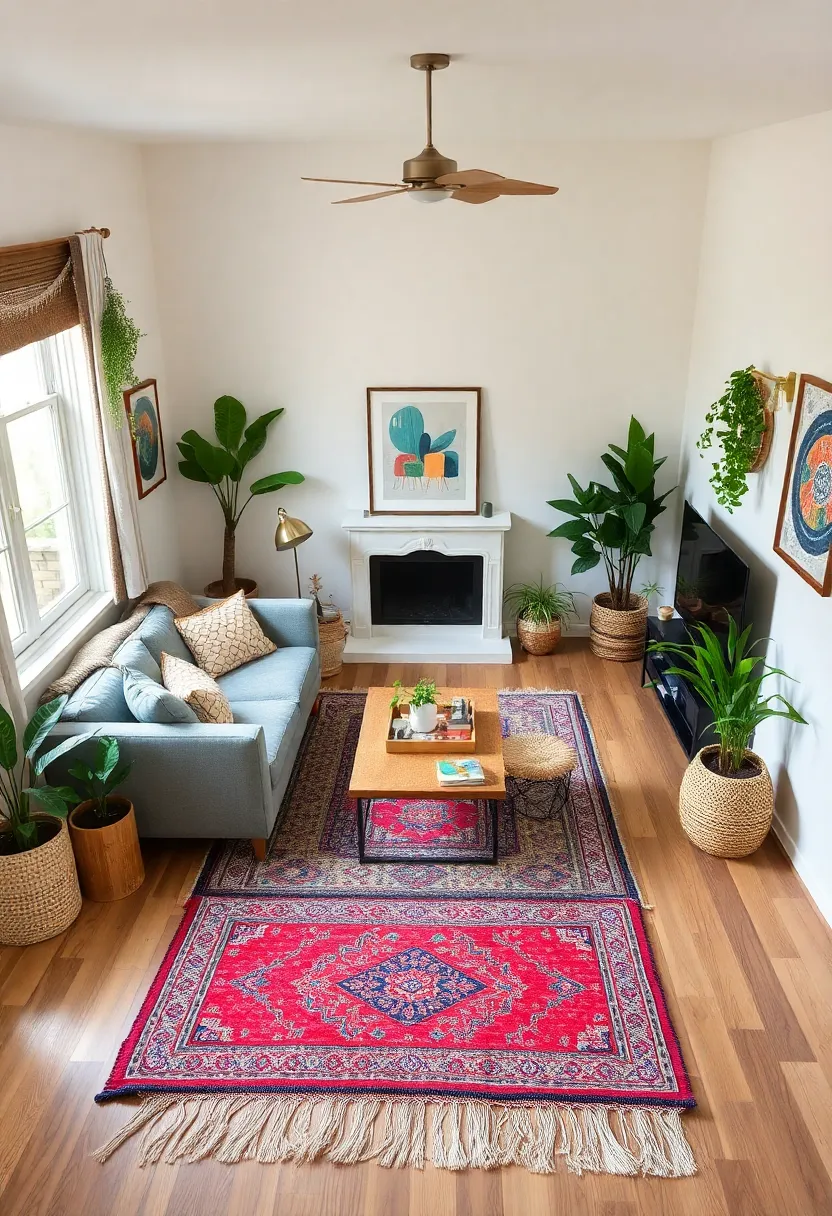
Creating distinct zones in your small living room can enhance functionality. Use rugs or furniture arrangements to separate spaces for different activities, like reading or socializing.
A large rug can define the sitting area, while a smaller one can cozy up a reading nook. Arrange furniture to encourage conversation, like angling chairs towards each other. You can also use plants or decorative screens to create separation without closing off the space.
• Define sitting areas with a large rug.
• Angle furniture for conversational flow.
• Use plants to create natural separation.
• Incorporate decorative screens for added style.
Defining zones helps your living room feel spacious and welcoming.
Create Zones with Rugs and Furniture
Editor’s Choice

AMADA HOMEFURNISHING 8×10 Washable Area Rug, Low-Profile Large Area Rug …
 Amazon$63.99
Amazon$63.99
Roundhill Furniture Oriental Shoji 4 Panel Screen Room Divider, Cherry
 Amazon$67.98
Amazon$67.98
Costa Farms Live Plants (3 Pack), Easy to Grow Real Indoor Houseplants, …
 Amazon$31.13
Amazon$31.1315. Reclaimed Wood Accents

Adding reclaimed wood accents brings warmth and character to your small living room. Whether it’s a coffee table, shelves, or decorative beams, reclaimed wood adds a rustic touch that fits perfectly with bohemian decor.
Look for pieces with natural imperfections that tell a story. Pair reclaimed wood with colorful accents for a striking contrast. Use wood as a base for decor elements, like plants or books, to keep your space engaging.
• Seek unique pieces with character.
• Mix wood with colorful decor for vibrancy.
• Use wood for decor elements like plants.
• Incorporate reclaimed wood for a cozy feel.
These accents not only enhance aesthetics but also promote sustainability.
Reclaimed Wood Accents
Editor’s Choice
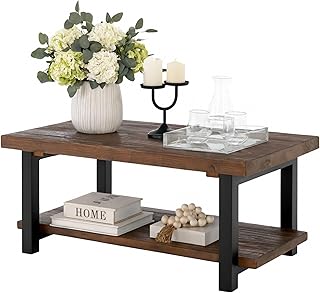
Alaterre Furniture Pomona Coffee Table with Storage Shelf-Industrial Mod…
 Amazon$229.95
Amazon$229.95
Set of 2 Wooden Arch Decor Boho Wood Rainbow Arch Decorative Objects Mod…
 Amazon$19.99
Amazon$19.99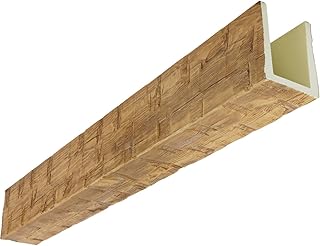
Heritage Timber Reclaimed Axed Cut Faux Wood Beam, 3-Sided (U-Beam), 3 1…
 Amazon$128.73
Amazon$128.7316. Utilize Vertical Space with Tall Bookcases

Don’t overlook your walls! Tall bookcases are an excellent way to utilize vertical space in a small living room. They provide ample storage while displaying your favorite books and decor pieces.
Choose open shelves to keep your space feeling airy. Mix books with decorative items for a personal touch that showcases your style. Painting the bookcase a bold color can also create a statement piece.
• Opt for open shelves for an airy feel.
• Combine books with decor items for interest.
• Paint the bookcase a vibrant color for a statement.
• Arrange items by size for organization.
This approach not only keeps your books organized but also transforms your walls into an artistic display.
Utilize Vertical Space with Tall Bookcases
Editor’s Choice

FACBOTALL 82″ Tall Bookshelf, 7-Tier Open Shelves Bookcase, Freestanding…
 Amazon$109.99
Amazon$109.99
BAYKA Floating Shelves for Wall, Wall Mounted Rustic Wood Shelves for Ba…
 Amazon$20.99
Amazon$20.9917. Floating Benches for Extra Seating

Floating benches offer a smart way to add extra seating without taking up floor space. They can easily be attached to walls and are perfect for small gatherings with friends. Choose designs that add a bohemian touch, featuring colorful cushions or throws for comfort.
Place them along walls or in corners to maximize seating areas without cluttering your space. Adding decorative pillows can enhance both comfort and style. Consider pairing with movable stools for flexible seating arrangements.
• Install along walls for efficient seating.
• Add decorative pillows for comfort.
• Use movable stools for flexibility.
• Choose designs that enhance your decor.
Floating benches not only improve utility but also maintain an airy feel.
Floating Benches for Extra Seating
Editor’s Choice

Floating Corner Shower Bench Kit-Custom Tile Shower Corner Seat,Wall Mou…
 Amazon$39.99
Amazon$39.99
Utopia Bedding Throw Pillows (Set of 4, White), 18 x 18 Inches Pillows f…
 Amazon$23.64
Amazon$23.64
KKTONER PU Leather Modern Round Rolling Stool with Footrest Height Adjus…
 Amazon$30.99
Amazon$30.9918. Modular Furniture for Flexibility

Modular furniture is incredibly versatile, making it ideal for small living spaces. You can rearrange modules to suit various functions, whether lounging, socializing, or working. Look for customizable pieces in bohemian colors and textures that resonate with your style.
Choose sectional sofas that can be disassembled or reconfigured to fit your needs. Invest in modular storage units that adapt as your lifestyle changes. Keeping your arrangement fluid allows for easy transitions between different setups.
• Opt for sectional sofas that can be rearranged.
• Choose modular storage that grows with you.
• Keep arrangements flexible for easy transitions.
• Select pieces that match your style.
With modular furniture, your living room can effortlessly adapt to your lifestyle.
Modular furniture makes small living rooms feel endless—reconfigure for lounging, dining, or work in minutes. With bohemian colors and textures, you can tailor ideas to decorate small living room to your mood and space. Keep sections modular and adaptable as life changes.
Modular Furniture for Flexibility
Editor’s Choice

127″ Modular Sectional Sofa with Movable Ottoman&Nailhead Trim Armrest,L…
 Amazon$992.68
Amazon$992.68
ClosetMaid Modular Storage Unit with 4 Drawers, Wood Closet Organizer, S…
 Amazon$194.97
Amazon$194.97
Boho Throw Pillow Covers 18×18 inch Set of 2,Bohemian Vintage Carpet Pat…
 Amazon$11.99
Amazon$11.9919. Colorful Accents to Brighten the Space
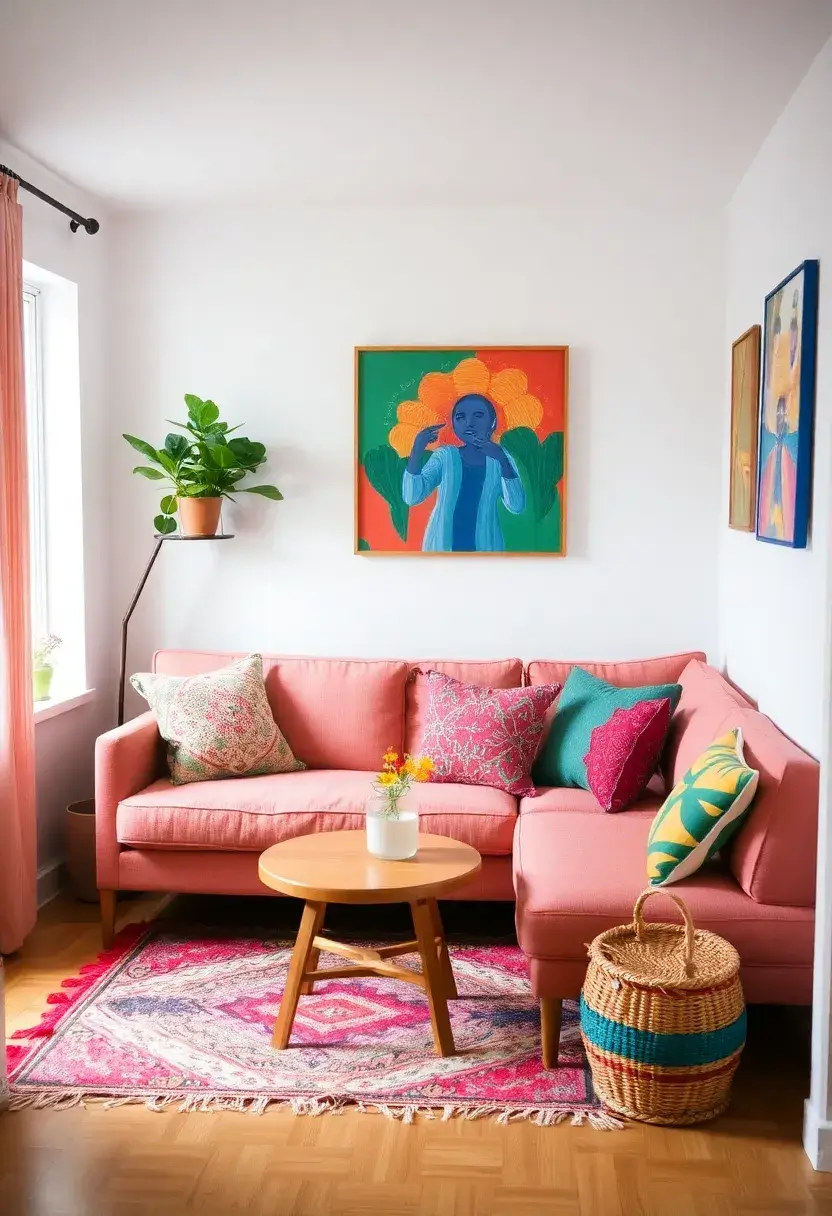
In a small living room, colorful accents can uplift the mood and enhance the overall vibe. Incorporate bright textiles, artwork, or decor pieces that catch the eye and evoke joy. Think about shades that fit your bohemian theme, like deep reds, vibrant yellows, and soothing greens.
Use throw pillows, art pieces, or vases in striking colors to create pops of interest. Consider a statement piece, such as a unique lamp or artwork, to serve as a focal point. Keeping walls neutral allows these colors to shine and stand out.
• Add vibrant pillows for a cheerful touch.
• Use a statement piece to create focus.
• Keep walls neutral to let colors pop.
• Incorporate decorative vases in bright hues.
This strategy ensures your living room is lively and cohesive.
Colorful Accents to Brighten the Space
Editor’s Choice

Jartinle Set of 4 Retro Floral Mandala Compass Medallion Bohemian Pillow…
 Amazon$18.99
Amazon$18.99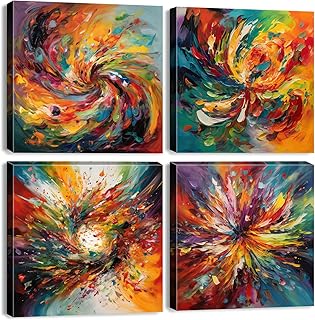
Colorful Abstract Wall Art Multi Color Graffiti Canvas Pictures Bedroom …
 Amazon$24.99
Amazon$24.99
Eleganttime Bud Vases for Flowers,Glass Colored Bud Vase in Bulk Set of …
 Amazon$21.98
Amazon$21.9820. Statement Light Fixtures

Statement light fixtures serve as both functional and artistic elements in your small living room. A unique chandelier or oversized pendant can draw attention without taking up floor space. Choose fixtures made from natural materials and intricate designs that resonate with your bohemian aesthetic.
Consider fixtures crafted from rattan, bamboo, or detailed metalwork for an artistic touch. Position lights strategically to highlight your decor while providing sufficient illumination. Warm bulbs create an inviting glow, enhancing the overall atmosphere.
• Select fixtures that enhance your style.
• Position lights to highlight decor effectively.
• Use natural materials for bohemian flair.
• Choose warm bulbs for a welcoming glow.
With a standout light fixture, your living room can showcase its personality.
Statement Light Fixtures
Editor’s Choice

Mini Hemp Rope Woven Pendant Light Woven Light Fixture Boho Chandelier L…
 Amazon$39.99
Amazon$39.99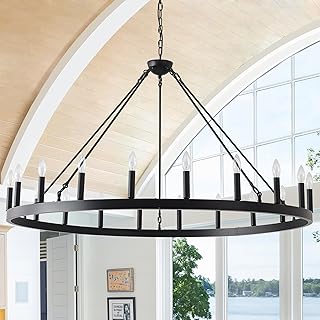
53 Inch Black Extra Large Wagon Wheel Chandelier, 20-Lights Farmhouse In…
 Amazon$299.99
Amazon$299.99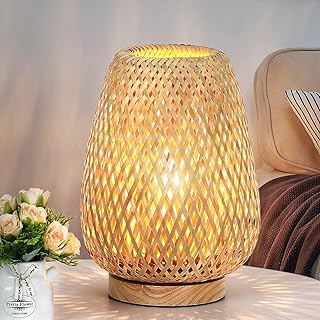
Rattan Table Lamp, Stepless Dimmable Small Beside Lamp, Vintage Wicker W…
 Amazon$29.99
Amazon$29.9921. Tapestries as Wall Art
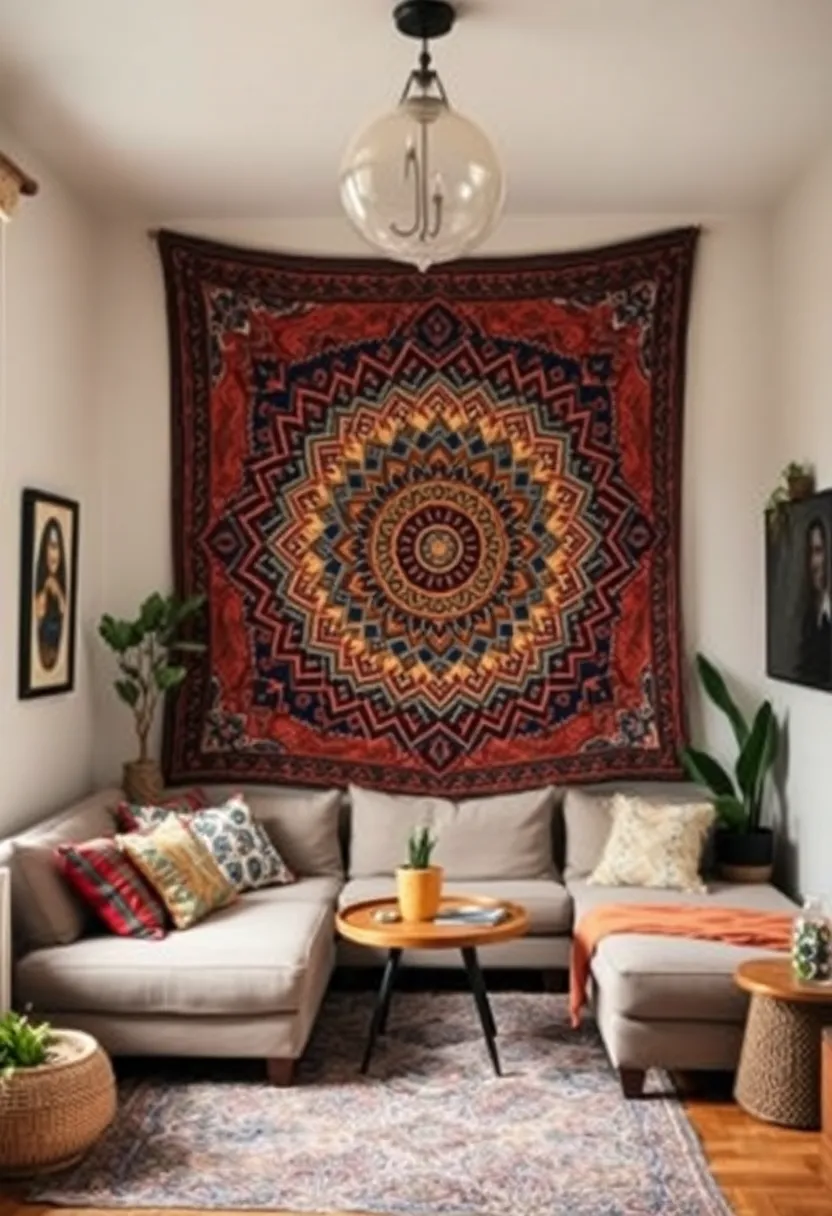
Tapestries are not only beautiful but also functional, making them great for small living rooms. They serve as wall art while adding warmth and texture to your space. Choose bohemian-style tapestries with intricate designs or colors that resonate with your theme.
Hang tapestries behind a sofa or along a blank wall to create a focal point. Layer smaller tapestries for a dynamic look, or use them to frame windows for added interest. Mixing textures by pairing tapestries with wood or metal frames can enhance the overall aesthetic.
• Hang tapestries to create a focal point.
• Layer small tapestries for visual interest.
• Incorporate mix of textures with frames.
• Use tapestries to frame windows beautifully.
Tapestries can bring a cozy feel to your living room, adding visual interest without taking up valuable space.
Tapestries as Wall Art
Editor’s Choice

Apdidl Green Nature Tapestry for Bedroom Aesthetic, Hippie Ceiling Tree …
 Amazon$11.99
Amazon$11.99
LUCKYLIFE Picture Frames Collage Wall Decor 10-Pack, Gallery Wall Frame …
 Amazon$22.99
Amazon$22.9922. Corner Shelves for Decorative Displays
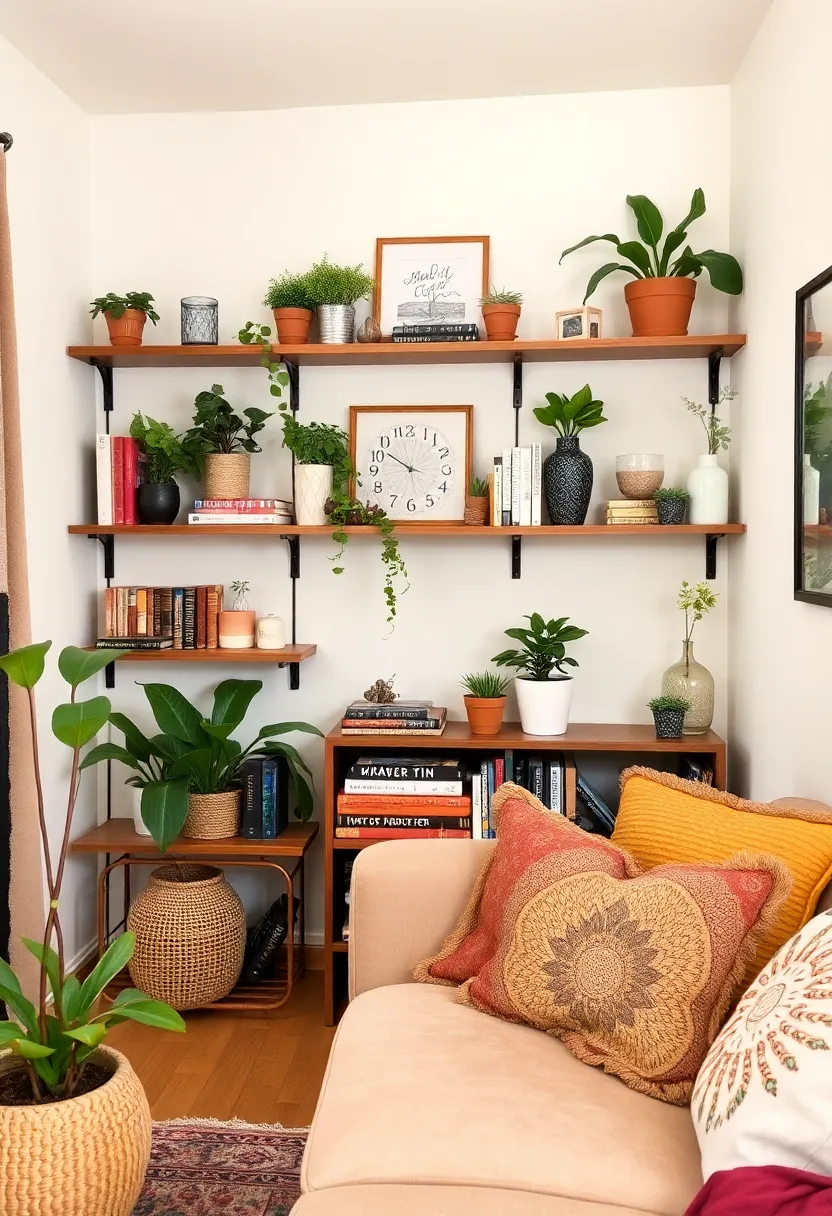
Corner shelves are a smart way to maximize space while providing areas for decorative displays. They are perfect for showcasing plants, books, or art pieces that enhance your living room’s bohemian style.
Look for corner shelves that fit well into your decor and are easily accessible. Arrange items by height and color for a visually appealing display. Use baskets on lower shelves for practical storage that blends with your aesthetic.
• Choose corner shelves that fit your decor.
• Arrange items by height and color for appeal.
• Incorporate baskets for practical storage.
• Use shelves to enhance bohemian style.
With corner shelves, you can utilize every inch of your space efficiently and artistically.
Corner Shelves for Decorative Displays
Editor’s Choice

Corner Shelf Stand, Corner Bookshelf, Storage Standing Shelf Unit with M…
 Amazon$47.49
Amazon$47.49
Beautiful Storage Basket Set of 4 – Natural Jute Rope Baskets for Shelve…
 Amazon$24.99
Amazon$24.99
Nearly Natural 48in Dracaena Silk Plant (Real Touch) Green
 Amazon$37.00
Amazon$37.0023. Artful Partitioning with Screens

Using a decorative screen can creatively divide your small living room while adding privacy. These screens can serve as functional art pieces, enhancing your decor. Look for ones with intricate designs that fit your bohemian aesthetic.
Folding screens offer versatility, allowing you to position them differently based on your needs. Decorate your screens with plants or lights for added visual appeal. Choose lightweight screens for easy rearrangement when required.
• Use folding screens for versatility.
• Decorate screens with plants or lights.
• Choose lightweight options for easy movement.
• Select designs that fit your decor style.
Artful screens not only define spaces but also add an artistic touch to your living room.
Artful Partitioning with Screens
Editor’s Choice

Roundhill Furniture Oriental Shoji 4 Panel Screen Room Divider, Cherry
 Amazon$67.98
Amazon$67.98
Room Divider 6FT Portable Room Dividers and Folding Privacy Screens, 88’…
 Amazon$56.99
Amazon$56.99
Plant Stand Indoor Corner Tall 2 Tier Metal Modern Flower Storage Plant …
 Amazon$21.99
Amazon$21.9924. Use Under-Furniture Storage
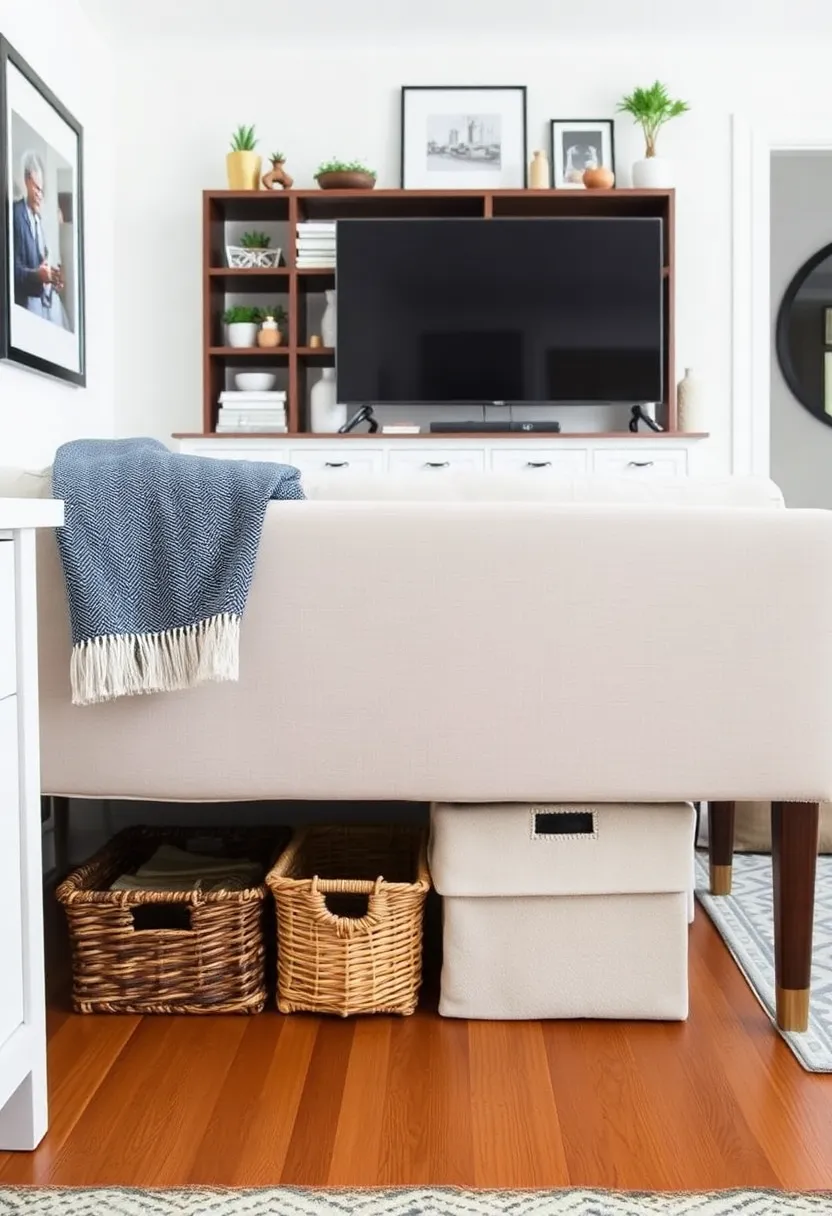
Don’t ignore the space under your furniture! Under-furniture storage is a clever way to keep clutter hidden while maintaining a stylish living room. Use shallow bins or baskets to store items out of sight.
Consider furniture like beds or sofas with built-in storage options for added convenience. Rolling bins can slide in and out easily, making access simple. Keep your storage units consistent in style to avoid visual clutter.
• Use shallow bins for hidden storage.
• Choose furniture with built-in storage options.
• Opt for rolling bins for easy access.
• Maintain a consistent style for storage units.
This approach saves space and keeps your small living room organized and efficient.
Use Under-Furniture Storage
Editor’s Choice

STERILITE 19638606 Large Clip Box, Clear with Blue Aquarium Latches 2 pi…
 Amazon$21.95
Amazon$21.95
Sterilite 3-Pack Gasket Box, Weather-Resistant Storage Bins with Latchin…
 Amazon$109.39
Amazon$109.39
Oversized Sleeper Sofa Couch, 110 inch 2 in 1 Pullout Couch Bed with Dou…
 Amazon$509.99
Amazon$509.9925. Seasonal Decor Changes
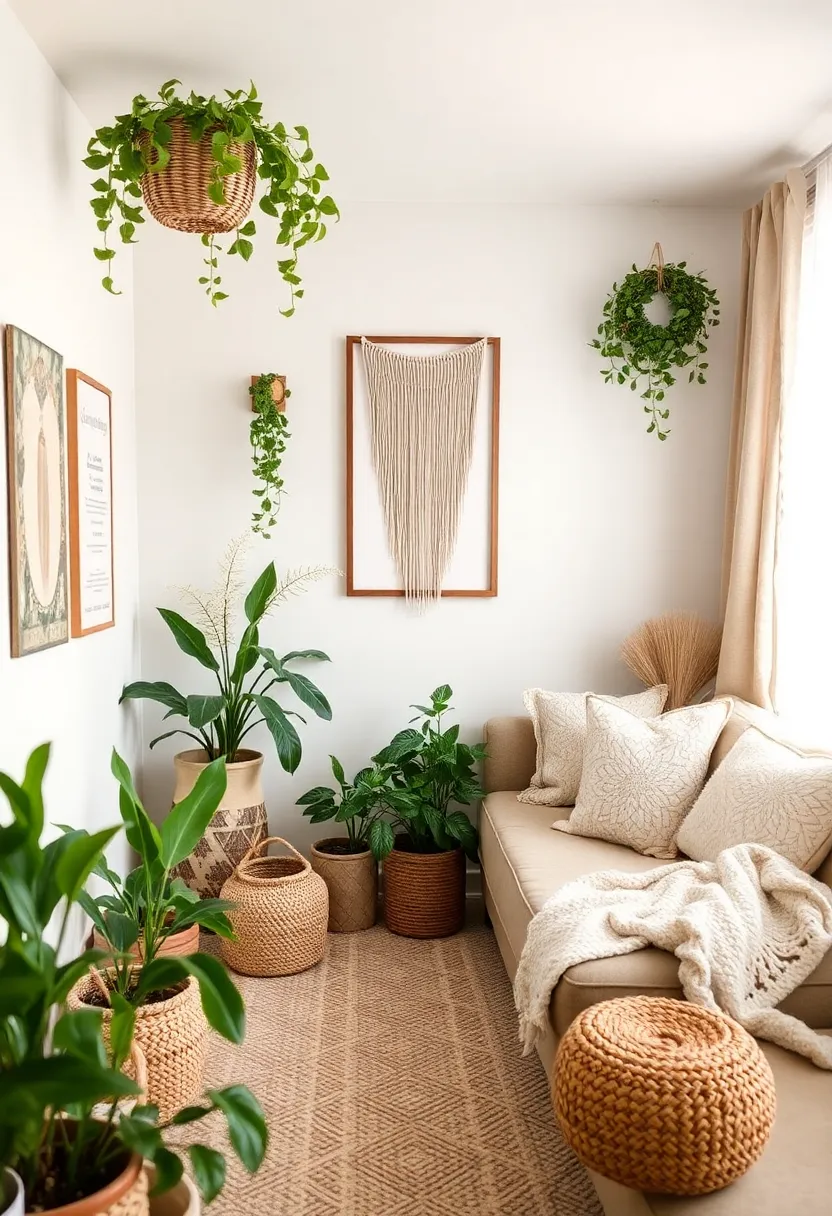
Changing your decor seasonally can refresh your small living room without a complete redesign. Swap out textiles, artwork, or decorative items to keep the space feeling fresh and inviting. For a bohemian touch, choose seasonal colors and themes that reflect nature.
Store off-season items in stylish bins or under the bed to keep the area clutter-free. Rotate plants and flowers based on the season for a living aspect of decor. Scents from candles or diffusers can enhance the atmosphere and create a cozy feel.
• Store off-season items in stylish bins.
• Rotate plants and flowers seasonally.
• Use seasonal scents to enhance ambiance.
• Change textiles for a fresh look.
This keeps your living room evolving with the seasons while maintaining that cozy bohemian charm.
Seasonal Decor Changes
Editor’s Choice

StorageWorks Fabric Storage Bins with Lid, Decorative Storage Boxes for …
 Amazon$32.99
Amazon$32.99
Set of 16 Halloween Pillow Covers 18 x 18 Inch Seasonal Throw Pillow Cov…
 Amazon$33.99
Amazon$33.99
SALKING Essential Oil Diffuser, 100ml Small Aromatherapy Diffuser with A…
 Amazon$11.54
Amazon$11.54Conclusion

Decorating a small living room with style is all about being creative with space-saving ideas. Whether you choose multifunctional furniture, clever storage solutions, or vibrant accents, every choice can reflect your unique bohemian flair.
Adapting these tips will help you create a warm, inviting oasis that feels spacious and personalized. Go ahead and put your imagination to work—your small living room is waiting for its transformation!
Note: We aim to provide accurate product links, but some may occasionally expire or become unavailable. If this happens, please search directly on Amazon for the product or a suitable alternative.
This post contains Amazon affiliate links, meaning we may earn a small commission if you purchase through our links, at no extra cost to you.
Note: We aim to provide accurate product links, but some may occasionally expire or become unavailable. If this happens, please search directly on Amazon for the product or a suitable alternative.
This post contains Amazon affiliate links, meaning we may earn a small commission if you purchase through our links, at no extra cost to you.
Frequently Asked Questions
What Are Some Effective Space-Saving Furniture Options for a Small Living Room?
When it comes to maximizing your space, consider pieces like ottomans with storage, fold-out sofas, and nesting tables. These multifunctional solutions not only save space but also keep your small living room decor stylish and functional.
Look for furniture that can easily adapt to your needs, allowing you to switch between cozy gatherings and open spaces seamlessly.
How Can I Incorporate Bohemian Elements into My Small Living Room Decor?
To add a bohemian flair, use a mix of textures and colors through soft textiles, patterned cushions, and vibrant rugs. Layer your decor with plants, hanging macramé, and unique art pieces that reflect your personality.
Even in a small space, these elements can create a warm, inviting atmosphere without overwhelming the area.
What Are Some Minimalist Design Tips for Small Space Organization?
Adopting a minimalist design can make your small living room feel more spacious. Start by decluttering, keeping only the items that truly spark joy. Use multi-functional furniture and opt for light color palettes to enhance the sense of openness.
Incorporating sleek, simple decor pieces will maintain a clean look while still allowing for personal expression.
How Can I Organize My Small Living Room Without Sacrificing Style?
Organizing a small living room stylishly is all about clever storage solutions. Use decorative baskets, shelves, and wall-mounted organizers to keep things tidy. Choose stylish home accents that double as storage, like chic coffee tables with hidden compartments.
This way, you can maintain a polished look while ensuring everything has its place.
What Are Key Ideas to Decorate a Small Living Room with Style?
To decorate a small living room with style, focus on a cohesive color scheme that creates a unified look. Use mirrors to reflect light and give the illusion of more space. Incorporate bold accents through art or throw pillows to add personality without overcrowding the room.
Lastly, remember to personalize your space with meaningful decor, making it truly yours while keeping it functional.
Related Topics
home decor
small living room
bohemian style
space-saving furniture
minimalist design
stylish accents
small space organization
budget friendly
easy updates
decorating tips
creative storage
compact design
Frequently Asked Questions
What are some effective space-saving furniture options for small living rooms?
When decorating a small living room, consider multifunctional furniture like ottomans with storage, sofa beds, and nesting tables. These pieces not only save space but also add style to your decor. Look for items that can be easily moved or tucked away when not in use, making the most of your limited area while keeping it stylish.
How can I incorporate a bohemian style into my small living room without overcrowding it?
Bohemian style thrives on layers and textures! To achieve this look in a small living room, focus on statement accents like colorful throw pillows, a vibrant area rug, and unique wall art. Use minimalist design tips to keep the space open. Choose a few key pieces that reflect your personality while ensuring the overall vibe remains cozy and uncluttered.
What are some organization tips for maximizing space in a small living room?
Maximizing space in a small living room requires clever organization! Start by utilizing vertical storage solutions, such as shelves or wall-mounted units. Use decorative boxes or baskets to keep clutter at bay. Additionally, consider under-sofa storage or utilizing corners with tall plants or bookcases to draw the eye upward, creating a sense of height and openness.
How can I add stylish home accents to my small living room without making it feel cramped?
Adding stylish home accents in a small living room can be tricky, but it’s all about balance! Choose a few statement pieces rather than overwhelming the space. Think about large-scale art or a bold mirror to create depth. Incorporate light fabrics and colors that reflect natural light, ensuring your accents enhance the space instead of crowding it.
What are some budget-friendly ideas to decorate a small living room?
Decorating a small living room on a budget is entirely doable! Start by repurposing items you already have, like painting old furniture or using fabric remnants for throw pillows. Consider DIY projects for wall art or shelving. Thrift stores can be goldmines for unique pieces that fit your style. Remember, it’s about creativity and resourcefulness rather than spending a lot!
Related Topics
home decor
small living room
bohemian style
space-saving furniture
minimalist design
stylish accents
small space organization
budget friendly
easy updates
decorating tips
creative storage
compact design

